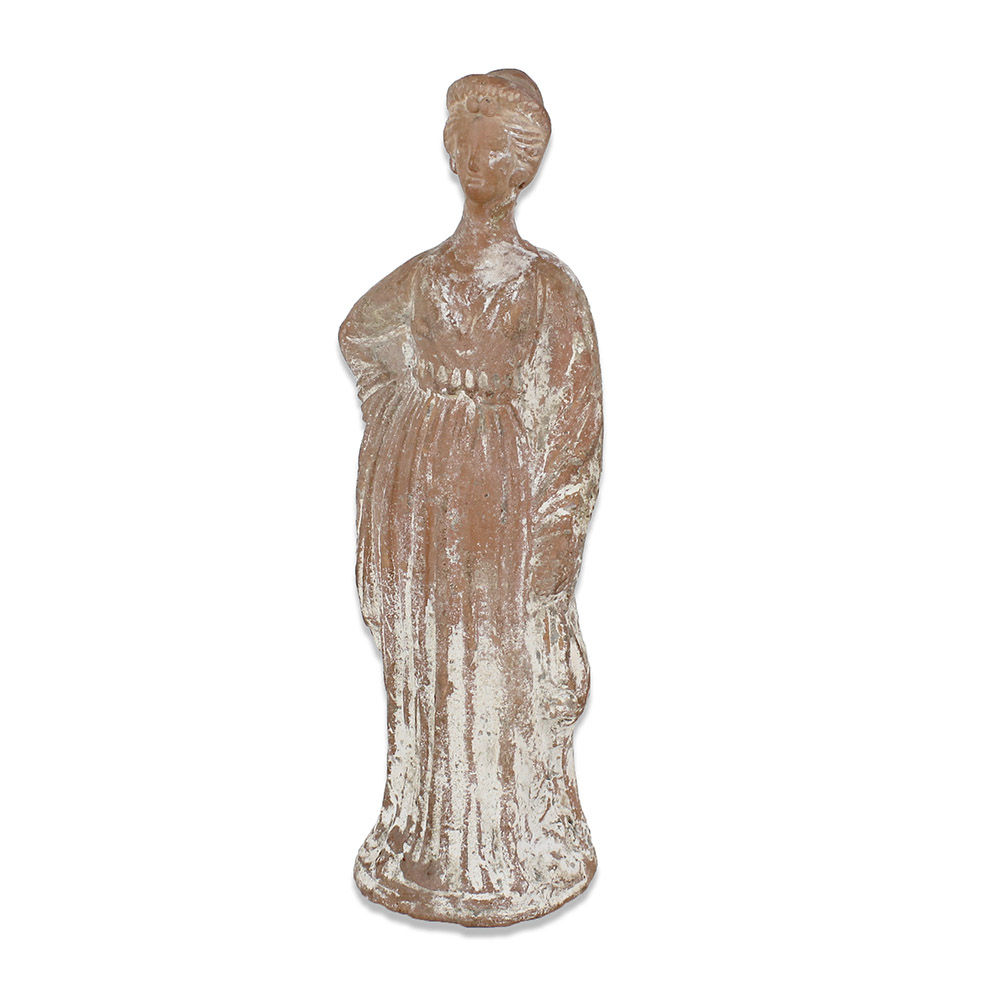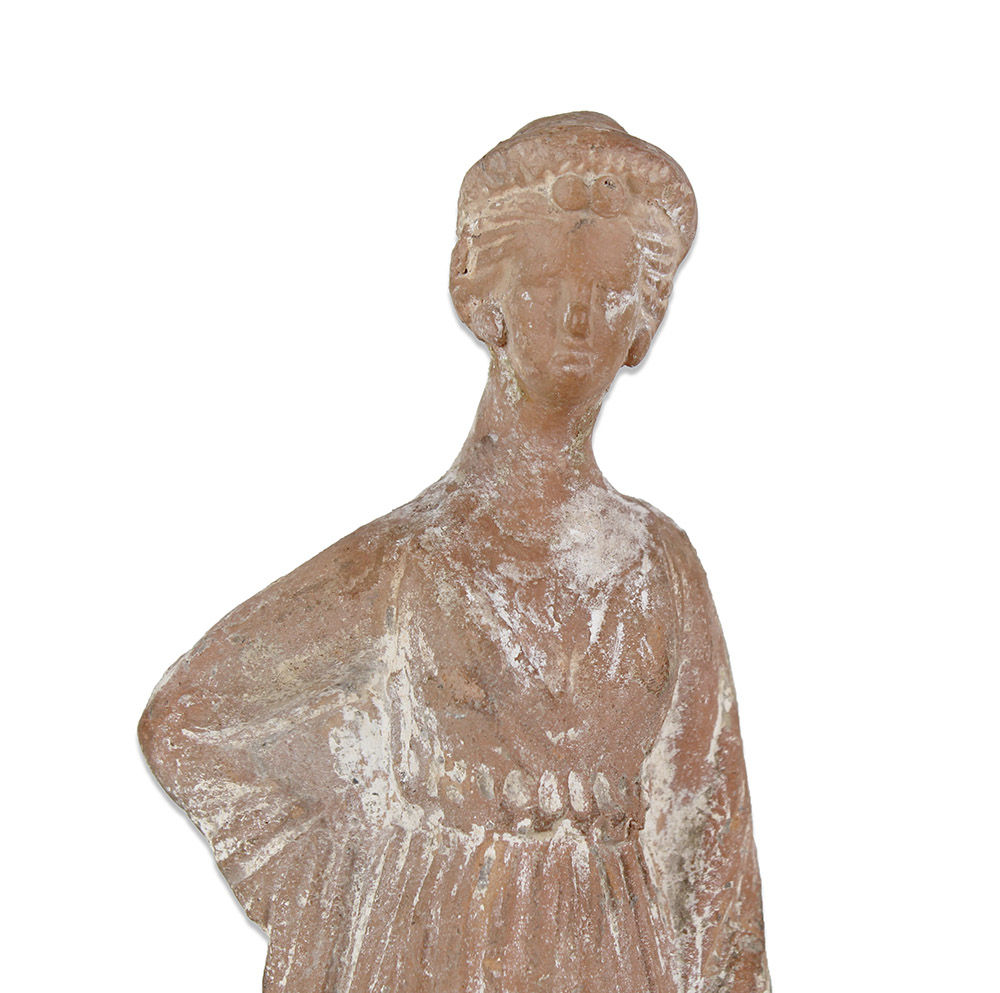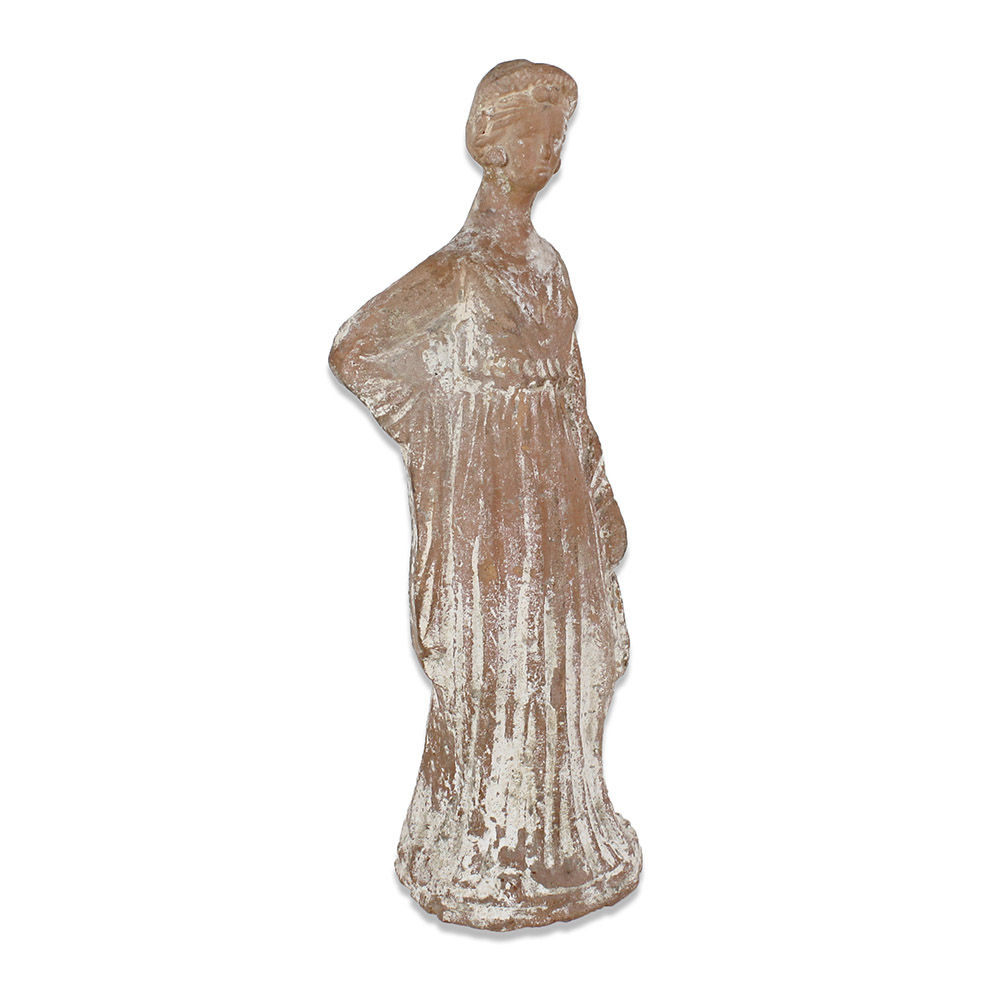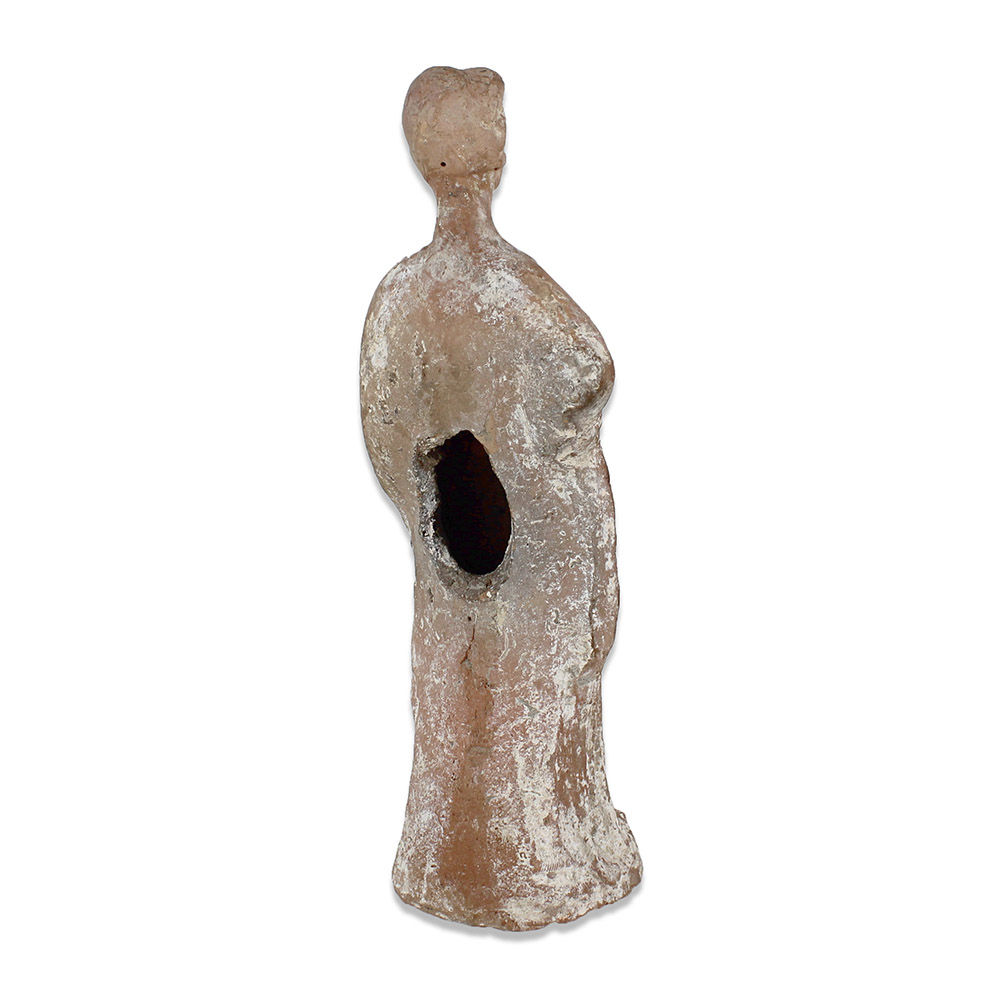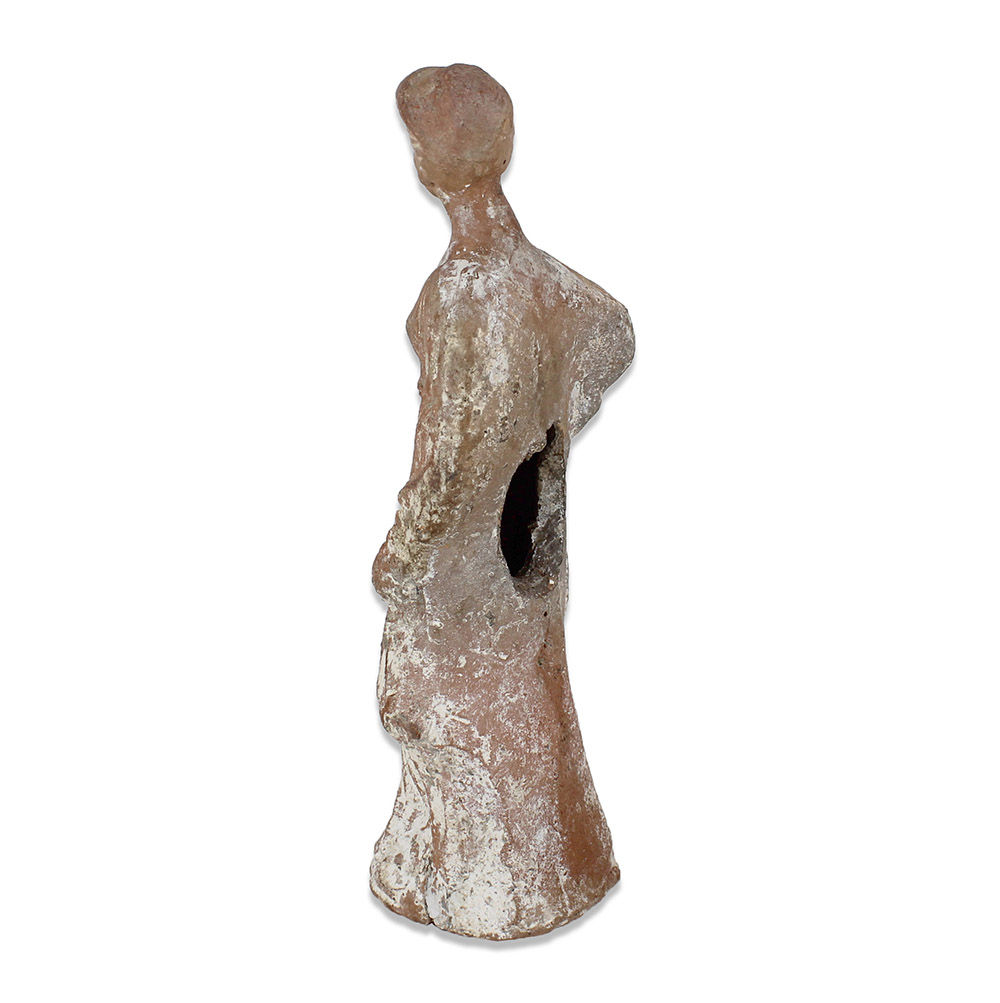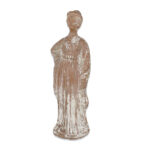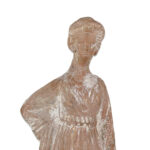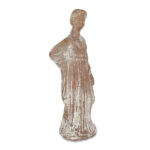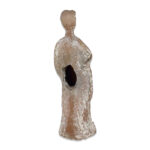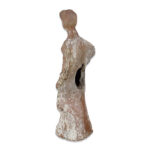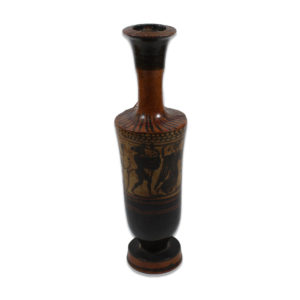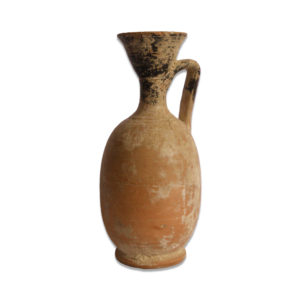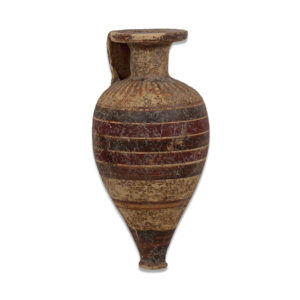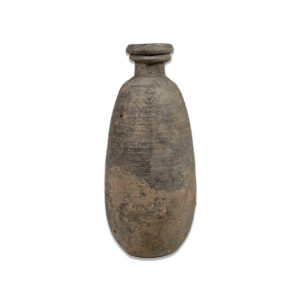Description
| ITEM | Statuette of a standing woman |
| MATERIAL | Terracotta |
| CULTURE | Greek |
| PERIOD | 4th – 3rd Century B.C |
| DIMENSIONS | 203 mm x 70 mm |
| CONDITION | Good condition, restored |
| PROVENANCE | Ex French private collection, acquired between 1950 – 1970 |
The Tanagra statuettes were a type of casting mould for Greek terracotta figures produced from the end of the 4th century BC, mainly in the town of Tanagra in the region of Boeotia, which has given its name to the whole class. They were coated with a liquid white layer before firing and sometimes painted later with naturalistic dyes such as watercolours, one example being the famous “Lady in Blue” now in the Louvre. They were widely exported around the ancient Greek world. These figures were made in many other places in the Mediterranean, such as Alexandria, Taranto in Magna Graecia, Centuripe in Sicily and Mirina in Mysia.
Although they are not portraits, Tanagra’s figures represent real women, and some men and children, in everyday costumes, with family accessories such as hats, crowns or fans. There are some character figures that may represent figures from Menander’s New Comedy and other writers. Other figures continued an earlier tradition of moulded terracotta figures that were used as cult images or votive objects. Typically they are between 10 and 20 centimetres high.
Some Tanagra statuettes had a religious purpose, but most seem to have been used only for decoration, as do their modern equivalents from the 18th century onwards. Given Greek burial customs, they were placed as funerary items in the tombs of their owners, most likely without any sense that they would serve the deceased in the afterlife, as is common in the funerary art of ancient Egypt or China. They do not appear to have been made especially for burial.


